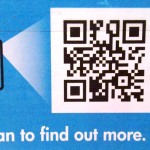 That suddenly ubiquitous square of blocks and splotches seen on advertisements, magazines, and even the sides of vans and trucks might be the key to collecting error-free vaccination data, the Center for Disease Control (CDC) says. 2D bar codes, also known as QR codes, placed on vaccine products helped providers automatically upload patient data to the EHR and added vaccination data to the provider’s state immunization registry without the risk of manual data entry errors or incomplete information.
That suddenly ubiquitous square of blocks and splotches seen on advertisements, magazines, and even the sides of vans and trucks might be the key to collecting error-free vaccination data, the Center for Disease Control (CDC) says. 2D bar codes, also known as QR codes, placed on vaccine products helped providers automatically upload patient data to the EHR and added vaccination data to the provider’s state immunization registry without the risk of manual data entry errors or incomplete information.
The CDC conducted a pilot of the program from 2011 until 2013, and found that accuracy of data collection was greatly improved when 2D barcodes were used instead of the current system, which often involves handwritten lot numbers which can be misread or inaccurately transcribed. “Even if the information is typed into electronic medical records or immunization information systems, there can still be errors,” the CDC explains. “The vaccine data can also be missing or incorrect within Vaccine Adverse Event Reporting System reports. The lot number is critical in instances such as a product recall.”
While a standard linear barcode can identify a product, a 2D barcode can also contain information on the lot number and expiration date. By adding machine-readable barcodes to vaccine products and introducing handheld scanners to providers, the CDC was able to pack a greater amount of information into a smaller space with the 2D barcode and help providers with their data collection and reporting efforts while reducing the necessary time for those activities significantly.
The pilot enlisted two vaccine manufacturers and approximately 220 immunizers from a number of states including private providers, publically funded health services, and one pharmacy. Researchers were able to easily track an individual product from manufacture to administration to EHR to immunization database and assess the impact of the new method on accuracy and completeness. The final report found significant cost and time savings.
As more providers have access to smartphones and tablets, which can read QR codes through their cameras with a simple app, the cost of dedicated handheld scanners may become less significant. However, workflow challenges and other change management issues remain for providers who are already overwhelmed with a variety of health IT initiatives sapping their time and energy.
The American Academy of Pediatrics (AAP) and other organizations have been embracing barcode branding for vaccine products for some time, and are working with the CDC to raise awareness about the new method and educate physicians about the potential costs and benefits of the upgrades, automated barcode system.
Source: EHR Intelligence

















